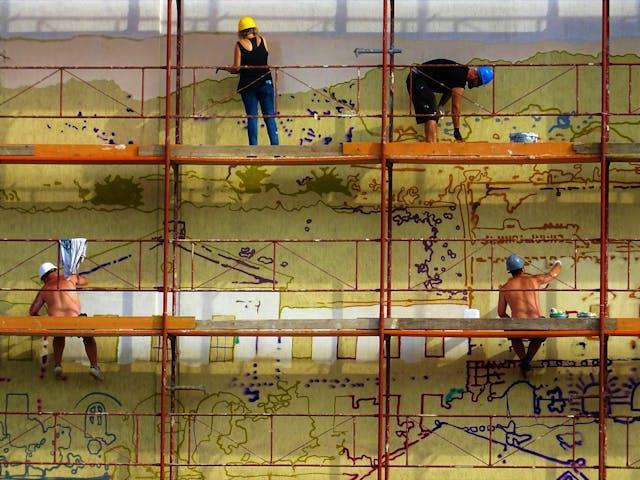High-rise construction is no small feat. The high structures and intricate designs are a challenge to many of these tasks, particularly when it comes to worker safety. Scaffolding serves as the backbone for safe and efficient work at elevation in such projects. Correctly designed and utilized scaffolding greatly reduces the risks and increases accessibility while keeping projects on track. In this article, we’ll dive into eight specific ways scaffolding enhances construction safety, particularly on high-rise projects.
Provides Stable Platforms for Work
High-rise constructions require working at daunting heights where stability becomes a main preference. Scaffoldings provide secure and stable platforms that allow employees to lay bricks, paint, or install fixtures without falling. A good scaffold system distributes weight evenly and reduces the probability of accidents such as wobbly surfaces. Stability not only guarantees worker safety but also improves precision and productivity.
Ensures Safe Access to Difficult Areas
Some parts of a tall building are inaccessible without scaffolding. A well-constructed scaffolding system ensures safe and easy access to areas difficult to reach. Workers are no longer required to be dependent on ladders or precarious setups to access their task targets. The risks of overreaching or working in unstable positions are, therefore, minimized. Scaffolding allows a worker to be confident about the job rather than their footing.
Reduces Fall Hazards
Falling is one of the main causes of accidents associated with high-rise constructions. Scaffolding reduces this by incorporating fall prevention measures such as guardrails, toe boards, and anchor points for harness usage. These will ensure that workers have proper protection to prevent falling. Scaffolding companies that prioritize safety-conscious observe the set regulations but also ensure a better health environment for all individuals involved in the premises.
Provides Space for Tools and Materials
One of the often neglected advantages of scaffolding is that it acts as a form of temporary storage of tools and materials. Rather than have the worker up and down ladders, searching for supplies, scaffolding allows for the storage of many materials on the structure in easily accessible locations. This means less unnecessary movement, fewer lost tools falling from heights, and the ability to get the work done without interruptions.
Customary Solution for Complex Designs
Tall constructions are distinguished by their distinct designs that may demand custom scaffolding. Scaffolding companies come in handy to design systems for a particular project, providing maximum safety and usability. From curved facades to angled roofs, the tailored scaffolding allows one to work safely through difficult architectural elements. This way, it ensures support to the worker irrespective of the complexity of the project.
Offers Better Protection from Weather Conditions
Weather can be a severe safety factor at high-rise construction sites. High winds or heavy rain may cause hazardous conditions or extreme heat may create difficult working conditions. The protective features that can be installed on scaffolding include enclosures or weatherproof sheeting to protect the workers from the elements. These contribute to safe practice as well as ensuring productivity during challenging weather conditions.
Facilitates Safe Inspection
Regular inspections are important to ensure that the structure of a building is not compromised, especially in the construction phase. Scaffolding provides a safe access scaffold on which engineers and supervisors can stand while inspecting the work at various stages. Unlike accessing the site by some less reliable access, scaffolding ensures that professional personnel inspect their areas without jeopardizing their safety. Proper inspection will identify problems and correct them promptly.
Enhances Team Collaboration at Heights
Scaffolding affords adequate space to work from elevation with safety in numbers. While a ladder only holds one worker at a time, scaffolding holds multiple workers and does not make them feel crowded as they are attempting to accomplish a task together. Improved teamwork leads to increased efficiency and lower exposure to accidents from miscommunication or loss of support. Workers can do better in areas where they can depend on a safe structure with their fellow colleagues on board.
Conclusion
It is more than just a temporary structure; it is a vital safety measure in high-rise construction projects. From providing stable platforms to enabling team collaboration, scaffolding solves multiple challenges inherent in working at elevation. A professional scaffolding company can tailor solutions to meet the specific needs of your project, ensuring that your workforce works safely and productively. That means offering safety in scaffolding reduces risks, helps contractors comply with regulations, and fosters a safe place for all its participants. For high-rise construction, the right scaffolding system is not just a convenience but a necessity.

